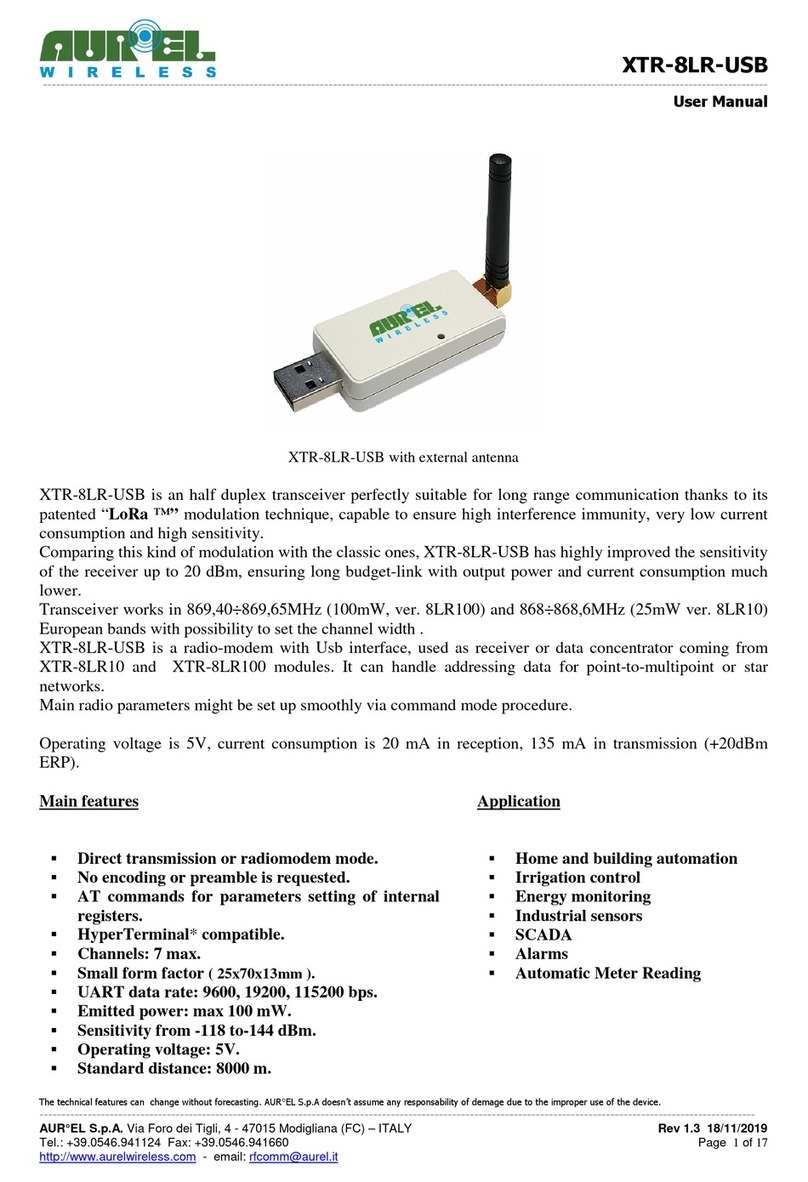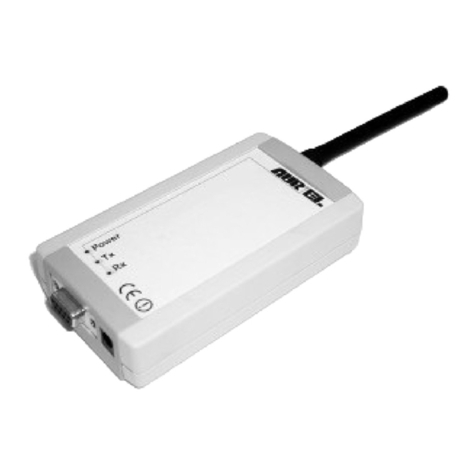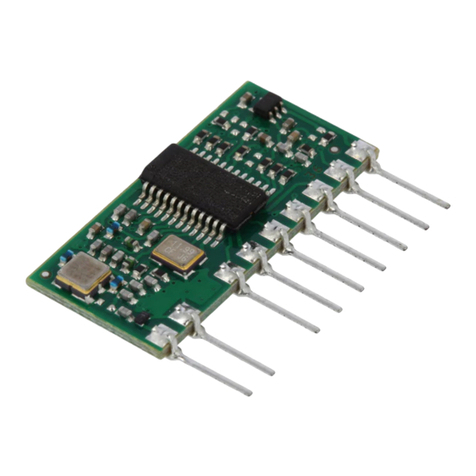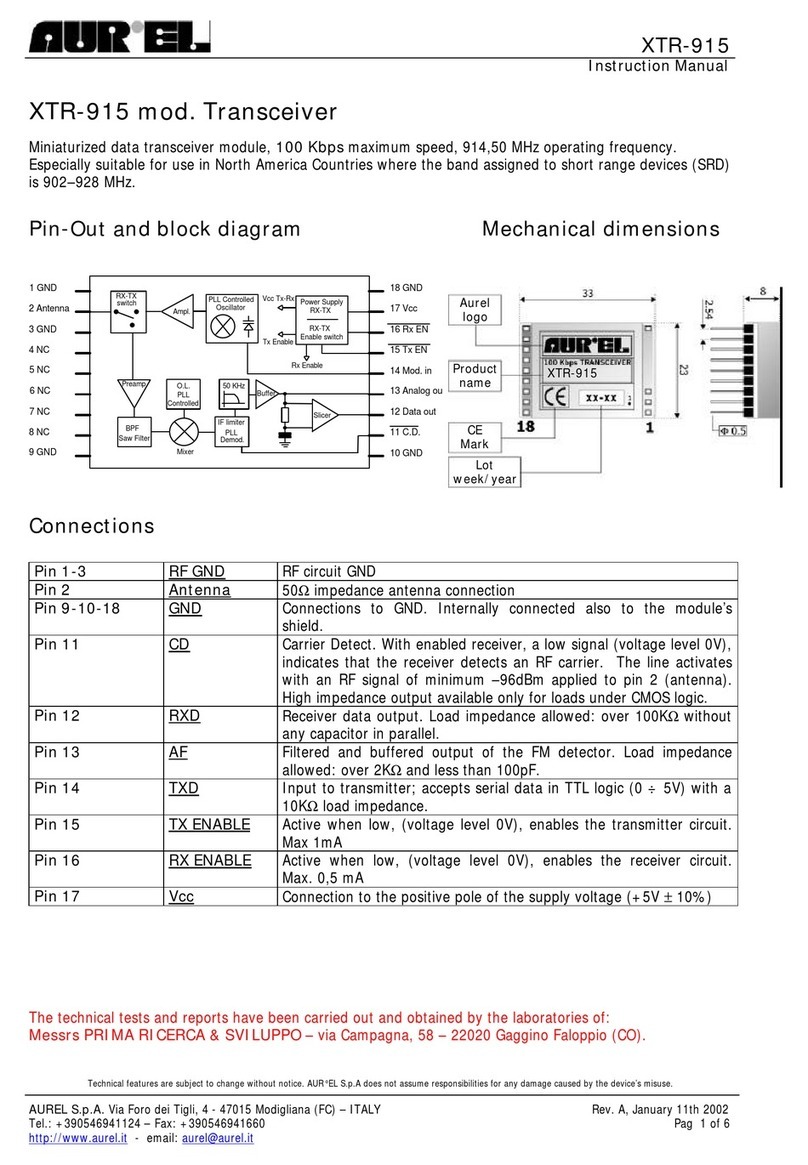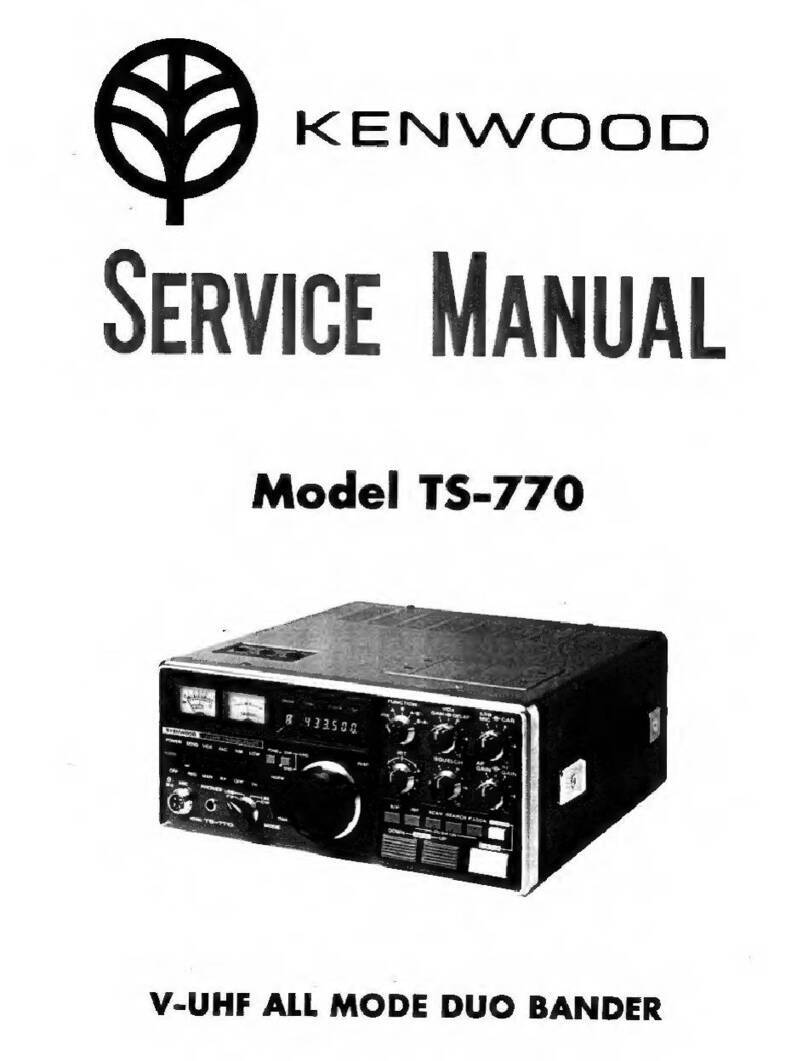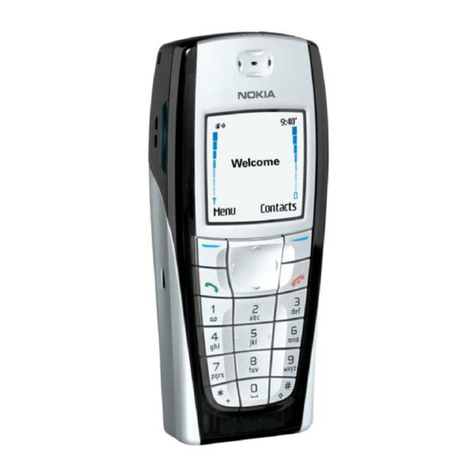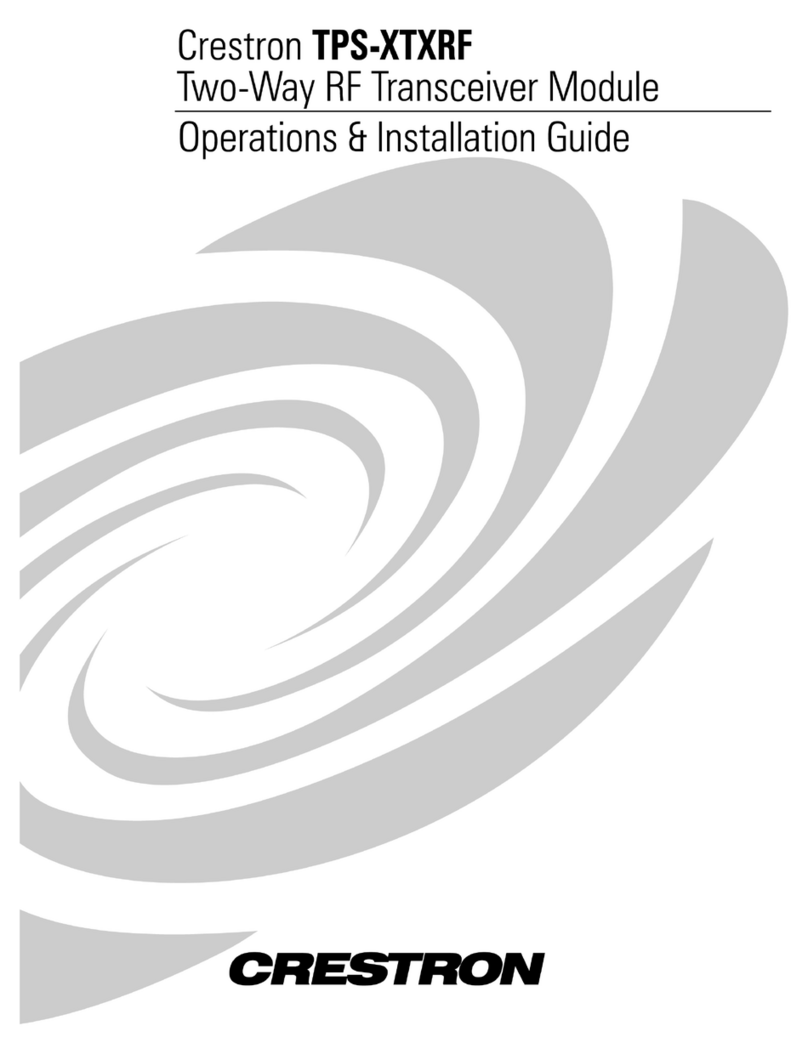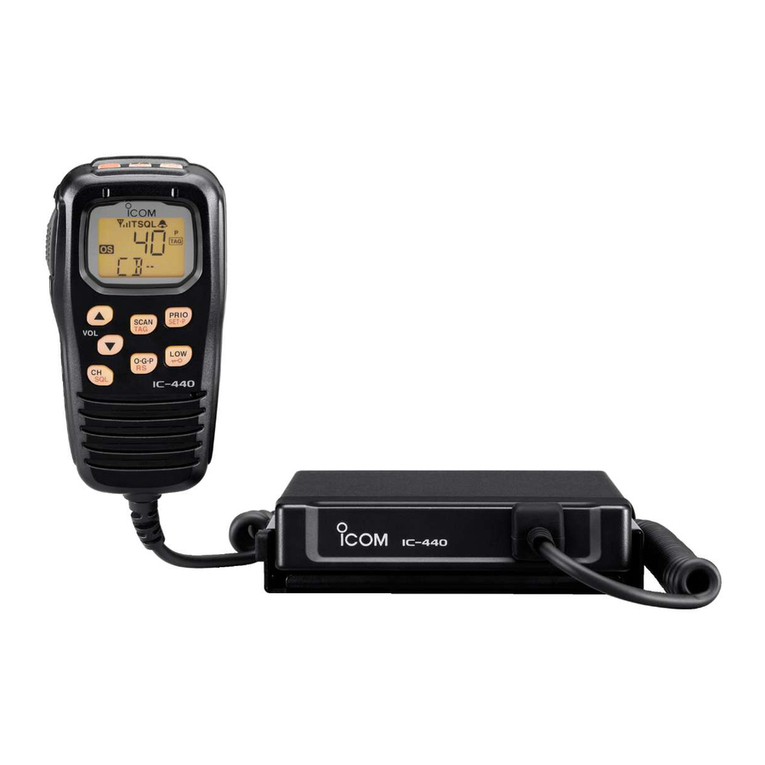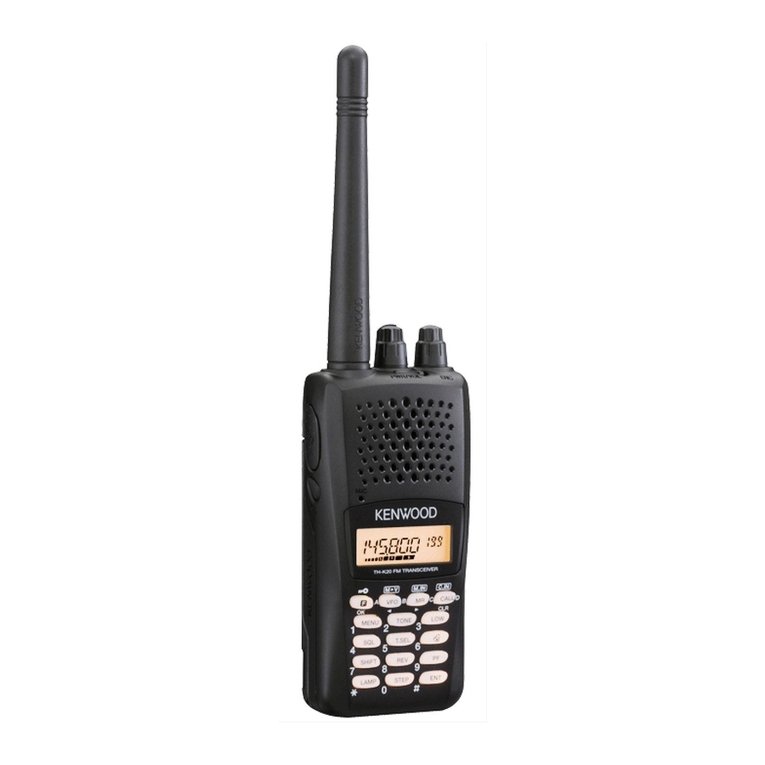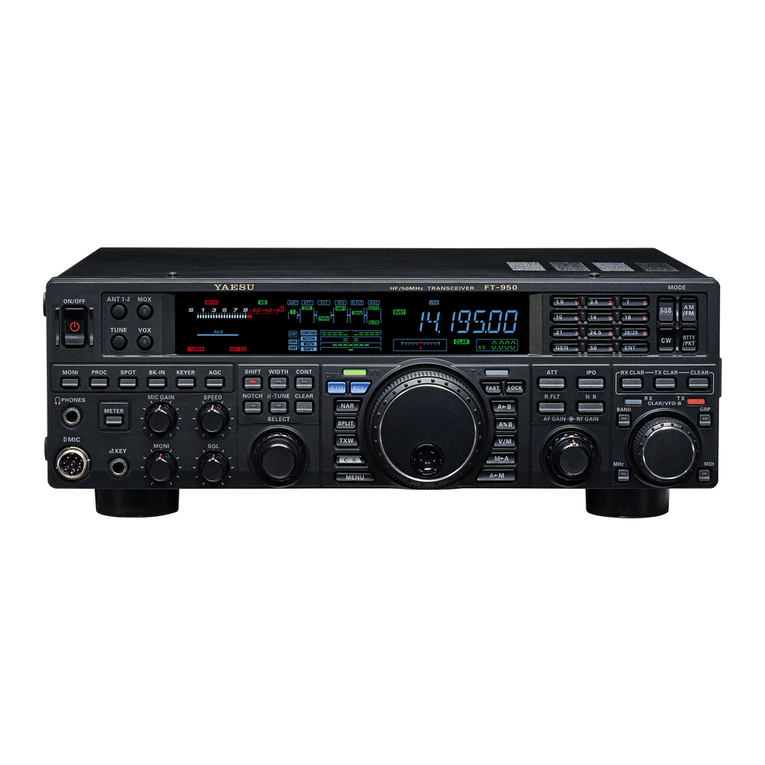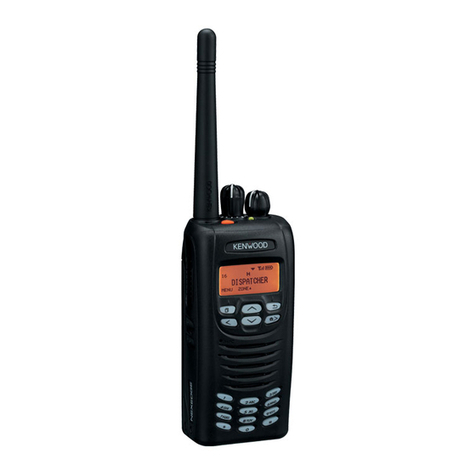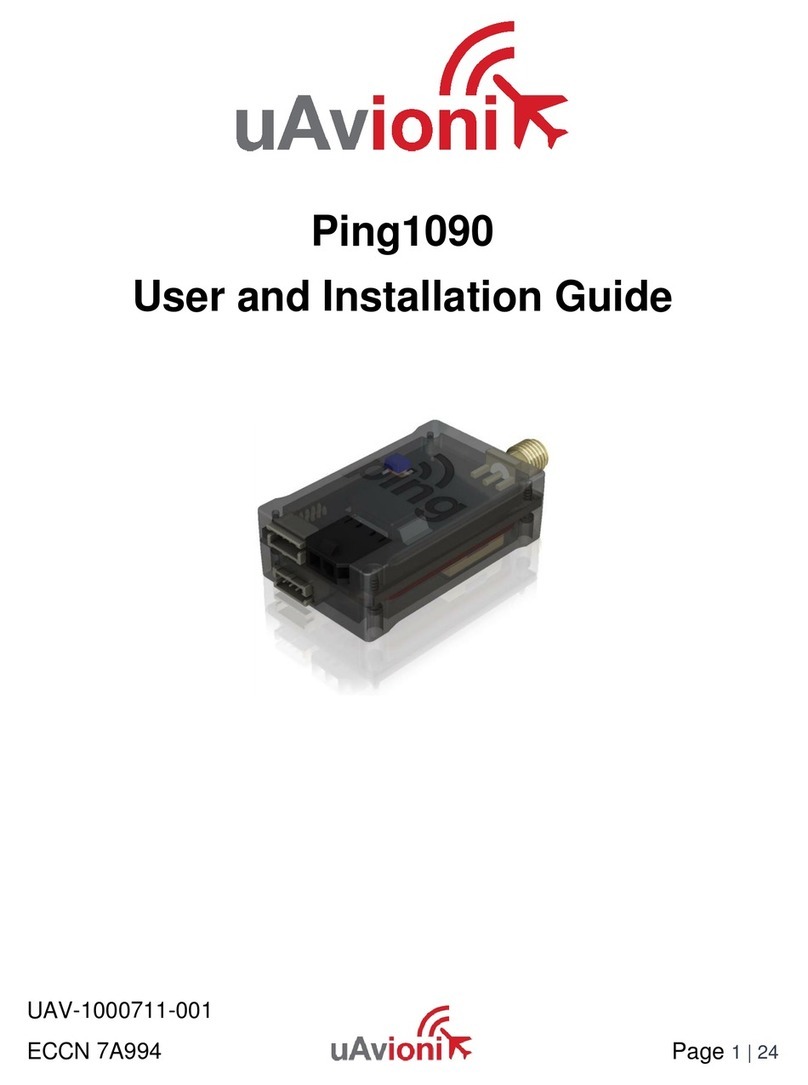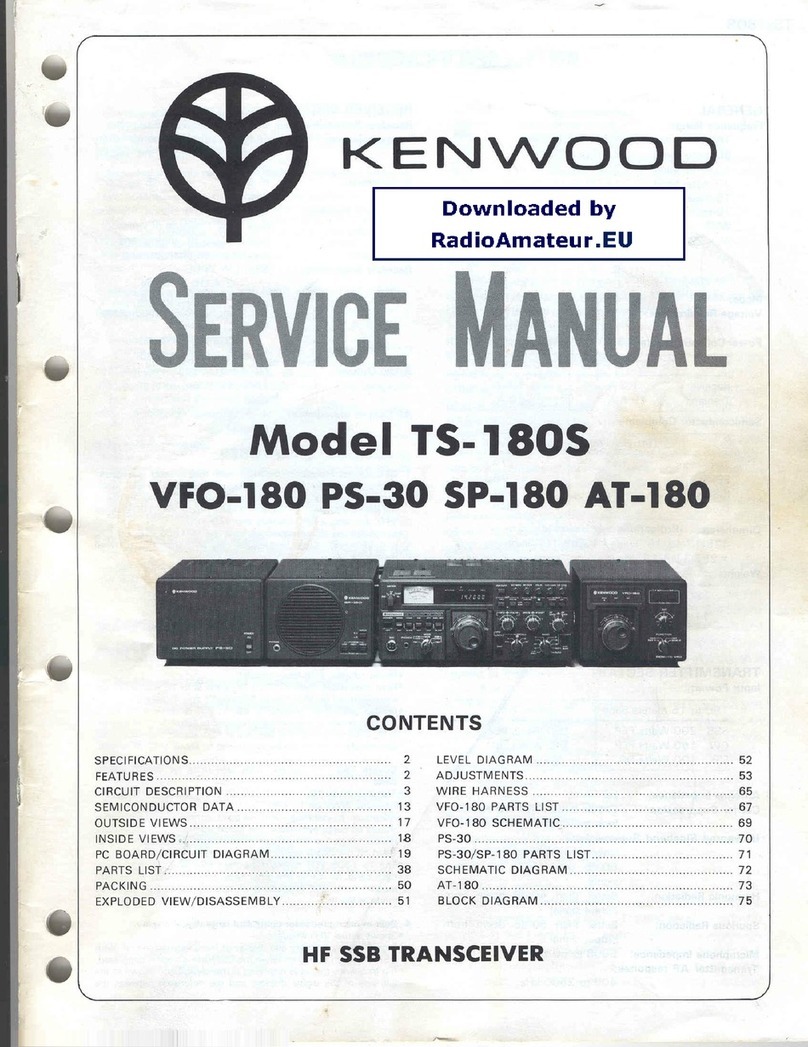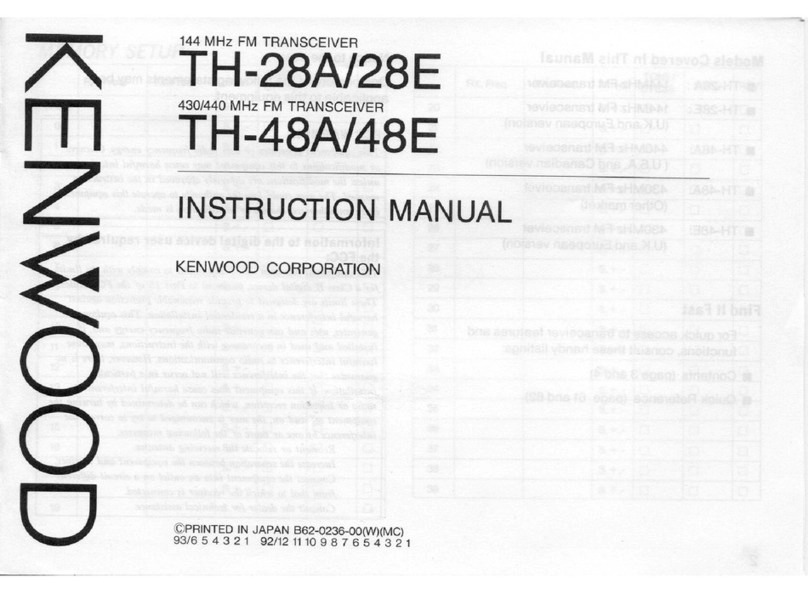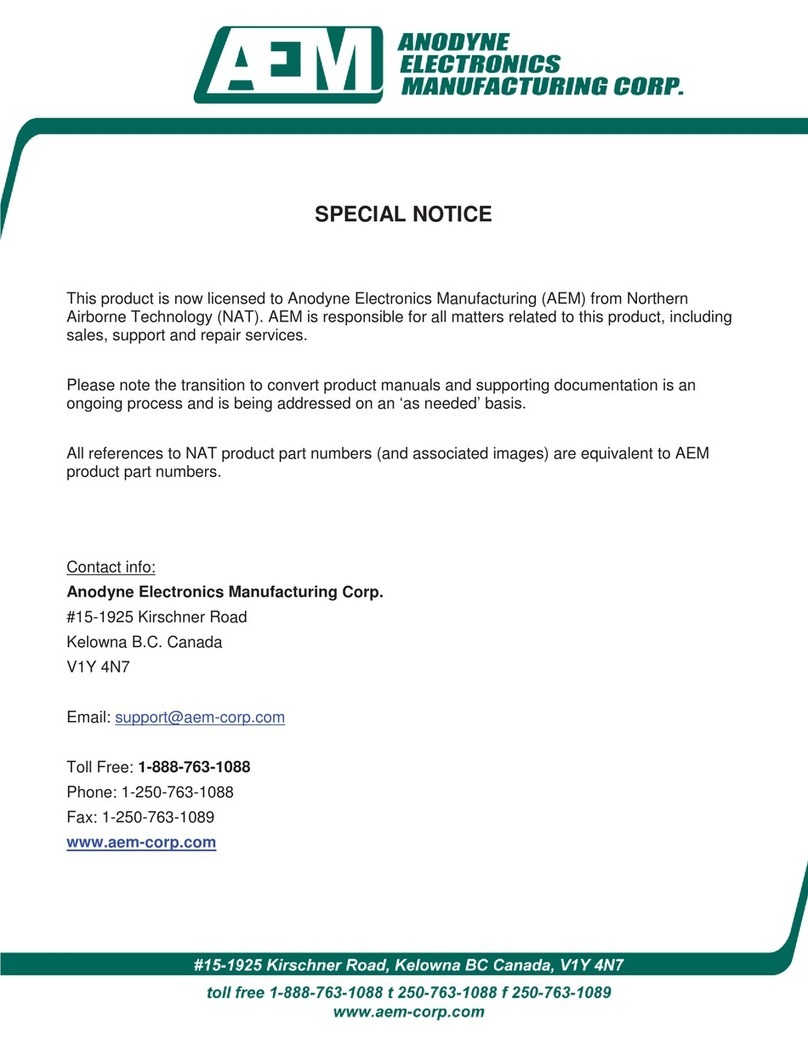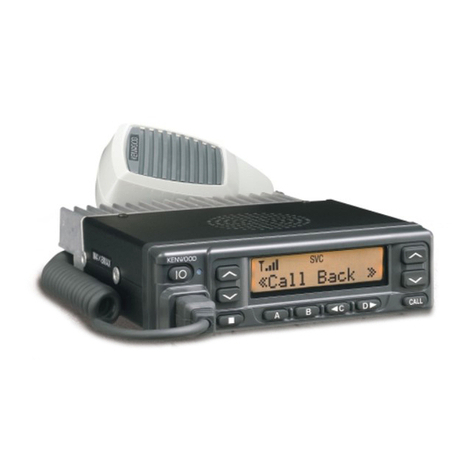AUREL DEMO XTR-8LR10 User manual

XTR-8LR10
---------------------------------------------------------------------------------------------------------------------------------------------------
User manual
Le caratteristiche tecniche possono subire variazioni senza preavviso. AUR°EL S.p.A. non si assume la responsabilità di danni causati dall’uso improprio del dispositivo.
-------------------------------------------------------------------------------------
------------------------------------------------------------------------------
AUR°EL S.p.A.
Via Foro dei Tigli, 4 - 47015 Modigliana (FC) – ITALY
Tel.: +39.0546.941124 Fax: +39.0546.941660
Rev 1.0
09
/07
/2015
Pag 1di 21
XTR-8LR10
is an half duplex transceiver for long range radio communication
based on a patented
“LoRa SSM”
modulation technique
,providing
high interference immunity
,
high sensitivity and very low power consumption with
+14dBm power.
Compared to standard modulation techniques
, XTR-8LR10
improves up to 20 dB the receiver sensitivity
,
allowing
long distances by using low power in transmission and low consumption, inexpensive power supply circuits and low
cost batteries.
Transceiver works in
868÷868,6MHz (25mW ver. 8LR10), 869,4÷869,65MHz (25mW, ver. 8LR10),
869,70÷870,00MHz (25mW, ver. 8LR10)
European band with possibility to set the channel width.
XTR-8LR10
is a radio-modem with UART input interface
,
working on data packages (max. size 255 bytes).
It can
handle addressing schemes for point-to-multipoint star networks. Main radio parameters might be set up smoothly via
command mode procedure
, offering the user flexibility and multiple solutions to the many problems involved
in the field.
Operating voltage is 3,3V, current consumption is 17 mA in reception and 30 mA in transmission (14 dBm ERP).
Module is available in SMD version, for surface and vertical assembling, 18 pin whose size is
33.5 X 15.4 X 2.4 mm.
Tape & reel package for automatic assembling for
pick and place
.
Main features
Applications
Direct transmission or radiomodem mode
RS-232 interface with store and foreward mode
No encoding or preamble requested
AT command mode for set up of parameters
HyperTerminal*compatible
Channels: 3 max
Small form factor (33.5x15.4x2.4 mm)
UART data rate: 9600, 19200, 115200 bps
Emitted power: max 20 mW
Sensitivity from -118 to-144 dBm
Operating voltage: 3,3V
Standard distance: 8000 m
Agriculture Systems
Irrigation control
Photovoltaic monitor
Industrial sensors
SCADA
Tele-Alarms
Instruments Monitoring
AMR

XTR-8LR10
---------------------------------------------------------------------------------------------------------------------------------------------------
User manual
Le caratteristiche tecniche possono subire variazioni senza preavviso. AUR°EL S.p.A. non si assume la responsabilità di danni causati dall’uso improprio del dispositivo.
-------------------------------------------------------------------------------------
------------------------------------------------------------------------------
AUR°EL S.p.A.
Via Foro dei Tigli, 4 - 47015 Modigliana (FC) – ITALY
Tel.: +39.0546.941124 Fax: +39.0546.941660
Rev 1.0
09
/07
/2015
Pag 2di 21
Absolute maximum ratings
Operating temperature -20 °C ÷+70 °C
Storage temperature -40 °C ÷+100 °C
Supply voltage +3,6V
Input voltage -1.0 ÷Vcc + 0.3V
Output voltage -1.0 ÷Vcc + 0.3V
Technical Characteristics
Min. Tip. Max. Unit
DC Levels
Supply voltage pin 5,17 2.4 3.3 3.6 V
Current consumption (rx mode) 17 mA
Current consumption (tx mode @ +15 dBm) 28 30 35 mA
Current consumption (sleep mode) 0,8 1,5
µ
A
“1” level voltage in input/output 0.7xVcc Vcc V
“0” level voltage in input/output 0 0.3xVcc V
RF TX
Frequency Band 1 868,00÷868,60 MHz
Frequency Band 2 869,40÷869,65 MHz
Frequency Band 3 869,70÷870,00 MHz
Emitted power 1 14 15 dBm
Modulation LORA
Channel width -3dB 125 KHz
Channel width -3dB 250 KHz
Spurious emissions < 1GHz -36 dBm
Spurious emissions > 1GHz -30 dBm
(Power on adjacent channel in TX (note 2) 50 nW
Antenna pin 1 ESD protection to contact (61000-4-2) 8 KV
RF RX
Rx Sensitivity, band 125KHz (SF:6-10-12) -118 -132 -137 dBm
Rx Sensitivity, band 250KHz (SF:6-10-12) -121 -135 -140 dBm
Adjacent channel selectivity (note 3) 50 dB
Adjacent channel saturation (note4) ≥87 dB
Blocking test at ±2MHz (note5) 85 90 dB
Blocking test at ±10MHz (note5) 85 94 dB
Performance
Spreading Factor 6 10 12
Coding Rate 4/5 4/8
UART Bit Rate (note 1) 9600 19200 115200 bps
Number of byte managed by buffer 1 247 Byte
Outdoor range 8000 m
Channels Number 3
Timing

XTR-8LR10
---------------------------------------------------------------------------------------------------------------------------------------------------
User manual
Le caratteristiche tecniche possono subire variazioni senza preavviso. AUR°EL S.p.A. non si assume la responsabilità di danni causati dall’uso improprio del dispositivo.
-------------------------------------------------------------------------------------
------------------------------------------------------------------------------
AUR°EL S.p.A.
Via Foro dei Tigli, 4 - 47015 Modigliana (FC) – ITALY
Tel.: +39.0546.941124 Fax: +39.0546.941660
Rev 1.0
09
/07
/2015
Pag 3di 21
PWRDN
→
RX_NORMAL 1,5 ms
RX_NORMAL
→
PWRDN 1,5 ms
TX_NORMAL
→
RX_NORMAL See : EQ1, EQ2 , EQ3, Fig4
RX NORMAL
→
TX_NORMAL See : EQ1, EQ2 , EQ3, Fig4
Default value
Channel (CN2) 869,5 MHz
Emitted power (tx) +10 dBm
UART data rate 115200 Bps
Bandwidth 125 KHz
Spreading Factor 8 SF
Note l: UART data is meant 8,n,1. The rate setting UART (S8 command) concerns the data-communication. In command mode, the
setting has no effect, and it will work only at 9600bps
Note2: Test carried out according to method described in ETSI EN 300 220-1 V2.4.1 paragraph 7.6
Note3: Test carried out according to method described in ETSI EN 300 220-1 V2.4.1 paragraph 8.3
Note4: Test carried out according to method described in ETSI EN 300 220-1 V2.4.1 paragraph 8.3.4
Note5: Test carried out according to method described in ETSI EN 300 220-1 V2.4.1 paragraph 8.4
Pin out description
Picture 1: module pin-out and mechanical drawing
PIN-OUT:
1) ANTENNA
2) GND
3)
Not present
4) GND
5) +VDD
6) OUT1
7) OUT2
8) SET A
9) SET B
10) RTS
11) CTS
12) RX UART
13) TX UART
14) GND
15) RESERVED
16) RESERVED
17) VDD
18÷25)
Not present
26) GND
*NI:not
implemented

XTR-8LR10
---------------------------------------------------------------------------------------------------------------------------------------------------
User manual
Le caratteristiche tecniche possono subire variazioni senza preavviso. AUR°EL S.p.A. non si assume la responsabilità di danni causati dall’uso improprio del dispositivo.
-------------------------------------------------------------------------------------
------------------------------------------------------------------------------
AUR°EL S.p.A.
Via Foro dei Tigli, 4 - 47015 Modigliana (FC) – ITALY
Tel.: +39.0546.941124 Fax: +39.0546.941660
Rev 1.0
09
/07
/2015
Pag 4di 21
N° Pin Name Description
1ANTENNA
50 ohm impedance for antenna
2 GND
Ground connection or negative supply voltage pin.
3
- Not present
4 GND
Ground connection or negative supply voltage pin.
5 VDD
Regulated supply voltage 3,3V-100mA
Connect a capacitor 10-100uF very close to the pin and GND.
6 OUT1
Digital output. In TEST mode, it goes to high level when receives and transmits “PING” message
7 OUT2
Digital output. In TEST mode, it set to high level when receives and transmits “PONG” message.
8 SET_A
Working setting mode
9 SET_B
Working setting mode
10 RTS
Request to send. Output set high, when UART buffer is full or during filling/emptying from radio FIFO.
Output set low when ready to receive data from UART port.
11 CTS
Clear to send. Digital input, when it is set to high level, no data transmission on TX_UART line
12 RX_UART
UART input in TTL RS-232 level logic with 1 start bit (0V), 8 data bit and 1 stop bit (3V).
Input must be driven in high level logic (3V)
13 TX_UART
UART output in TTL RS-232 levels, 1 start bit (0V), 8 data bit and 1 stop bit (3V).
Output in high level logic (3V)
14 GND
Ground connection or negative supply voltage pin.
15 RESET
Module Reset
16 NI
Not used
17 VDD
Regulated supply voltage 3,3V-500mA.
Connect a capacitor 10-100uF very close to the pin and GND.
18 ÷ 25 -
Not present
26 GND
Ground connection or negative supply voltage pin.
Table 1: Pin description
LoRa Modulation:
The RF modulator and demodulator uses the spread spectrum radio technique and it's possible to set
Chip/Symbol ratio from 128 to 4096, depending on RF sensitivity and flying time desired.
Improvement of sensitivity is outstanding compared to standard FSK modulation technique: 7,5 dB with 128
Chip/Symbol value and 20 dB with 4096 Chip/Symbol value.
Furthermore it is granted a general improvement of interference immunity, adjacent channel immunity and
blocking tests compared to FSK demodulator.
The tables here below show how to properly set modulation parameters depending on sensitivity and flying
time desired.
In order to be understood, flying time means the radio channel occupation for data package made of a 8 bytes
preamble + 8 byte payload + CRC.

XTR-8LR10
---------------------------------------------------------------------------------------------------------------------------------------------------
User manual
Le caratteristiche tecniche possono subire variazioni senza preavviso. AUR°EL S.p.A. non si assume la responsabilità di danni causati dall’uso improprio del dispositivo.
-------------------------------------------------------------------------------------
------------------------------------------------------------------------------
AUR°EL S.p.A.
Via Foro dei Tigli, 4 - 47015 Modigliana (FC) – ITALY
Tel.: +39.0546.941124 Fax: +39.0546.941660
Rev 1.0
09
/07
/2015
Pag 5di 21
Bandwidth 125KHz
Spreading Factor Sensibilità (dBm) Tempo di volo (ms)
6 -118 21
7 -123 41
8 -126 82
9 -129 144
10 -132 289
11 -134 496
12 -137 991
Bandwidth 250KHz
Spreading Factor Sensibilità (dBm) Tempo di volo (ms)
6 -115 10
7 -120 21
8 -123 41
9 -126 72
10 -129 144
11 -131 248
12 -134 496
As you can see sensitivity increases as far as SF value increases and data rate decreases as far as SF increases
and Bandwidth decreases.
Parameters choice has to be made by assessing at first the working band and then the bandwidth.
In this case SF value equals to 8-10 is the best trade-off between RF sensitivity and flying time.
Very often in radio control applications, payload is not more than 8-10 bytes and 0,5 sec is a reasonable time
for transmission and feedback (ACK) reception.
Below there are the calculating equations of the flight time for radio packets with different payloads from 8
bytes:
EQ1
Tsym: duration of a symbol in seconds
SF: Spreading Factor from 6 to 12
BW: radio channel band in Hz (register S2)
EQ2
PayloadsymbNb: Payload symbol number
nBytePL: payload byte number
=BW
Tsym
SF
2
(
)
(
)
( ) ( )
+×
−× +×−×
+= 4
24 4448
8CR
SF SFnBytePL
ceilingbNbPayloadsym

XTR-8LR10
---------------------------------------------------------------------------------------------------------------------------------------------------
User manual
Le caratteristiche tecniche possono subire variazioni senza preavviso. AUR°EL S.p.A. non si assume la responsabilità di danni causati dall’uso improprio del dispositivo.
-------------------------------------------------------------------------------------
------------------------------------------------------------------------------
AUR°EL S.p.A.
Via Foro dei Tigli, 4 - 47015 Modigliana (FC) – ITALY
Tel.: +39.0546.941124 Fax: +39.0546.941660
Rev 1.0
09
/07
/2015
Pag 6di 21
CR: coding rate from 1 to 4 (register S6)
EQ3
Tpachet: Total duration of the packet in seconds
12,25: number of symbols used by the preamble
On the following Link:
TBD
It is downloadable an Excel sheet that automatically calculates the radio flight time according to the
parameters chosen.
Data packet frame:
XTR-8LR10 is a radiomodem working in packet mode and handling addresses for point-to-multipoint
networks.
Packet has a 255 bytes max length, where 247 bytes are the payload and 8 the addresses.
It's made up of:
•Preamble: it comprises 8 bytes of variable length depending on data rate, used for synchronization
purposes.
•Header: it includes payload length in byte, Code Rate, presence of 16 bit CRC.
•Network_ID: every module has got a 4 bytes network ID, changeable via AT command. (present
only in network mode S10=1)
•Source Address: node or module address from which the packet starts (sender), composed by 2 bytes
for a total of 65536 nodes in each network. This address can be changed via AT command. (present
only in network mode S10=1)
•Destination Address: composed by 2 bytes, it means destination node address where sending the
message (payload). Differently from the other parameters, it is not changeable via AT command but
it must be forwarded on serial port, before payload.
0xFF (default) address means a broadcasting message: in this case every node joining the network
(same network_ID) receives the message (present only in network mode S10=1)
•Payload: from 1 to 247 bytes, composed by the sent or received message. When received, the
message is forwarded to UART output only in case Network_ID and Destination address are
corresponding to the parameters previously memorized in S11 and S12 registers, otherwise it's
eliminated. In case of transmission, data coming from UART port are included in payload field of
the radio packet transmitted.
•Payload CRC: 2 Bytes
In normal transmission and reception operations, it is mandatory to set up the 2 addresses needed for network
functionality in command mode, then move to NORMAL mode and send/receive data (payload). To transmit
a radio message the user must send to UART the Destination Address before the payload. In case of
reception of radio message, the data forwarded over the TX_UART would have on the beginning 2 Bytes of
Source Address. Data are not encryped.
(
)
TsymbNbPayloadsymTpachet ×+= 25,12

XTR-8LR10
---------------------------------------------------------------------------------------------------------------------------------------------------
User manual
Le caratteristiche tecniche possono subire variazioni senza preavviso. AUR°EL S.p.A. non si assume la responsabilità di danni causati dall’uso improprio del dispositivo.
-------------------------------------------------------------------------------------
------------------------------------------------------------------------------
AUR°EL S.p.A.
Via Foro dei Tigli, 4 - 47015 Modigliana (FC) – ITALY
Tel.: +39.0546.941124 Fax: +39.0546.941660
Rev 1.0
09
/07
/2015
Pag 7di 21
Picture 2: Data radio packet frame in NORMAL mode
In NORMAL mode no network (register S10=0), NETWORK ID, SOURCE ID and DESTINATION
ADDRESS are not in radio protocol and are available 255 bytes of payload.
radio
Figura 3: Data radio packet frame in NORMAL mode, no network
Operation modes:
Device works in 4 states operation modes:
1. SLEEP
2. COMMAND MODE
3. NORMAL
4. TEST MODE
1. Sleep
When SET_A, SET_B, inputs are open or connected +V, module enters automatically in sleep state: radio
and microcontroller chips are in low power state.
It's only allowed the activation of command AT (++++) via RX UART port, to enter into command-mode.
2. Command Mode
Command mode allows the user to set up operating parameters.
Configuration occurs via AT commands sent to RX_UART (pin.12) with 9600 bps data rate. Likewise return
values are received from TX_UART (pin.13).

XTR-8LR10
---------------------------------------------------------------------------------------------------------------------------------------------------
User manual
Le caratteristiche tecniche possono subire variazioni senza preavviso. AUR°EL S.p.A. non si assume la responsabilità di danni causati dall’uso improprio del dispositivo.
-------------------------------------------------------------------------------------
------------------------------------------------------------------------------
AUR°EL S.p.A.
Via Foro dei Tigli, 4 - 47015 Modigliana (FC) – ITALY
Tel.: +39.0546.941124 Fax: +39.0546.941660
Rev 1.0
09
/07
/2015
Pag 8di 21
To enter command mode, possible only from sleep mode, send to RX_UART a sequence of 4 ‘+’ ASCII
characters in a row (++++).
In order to execute it, it's recommended to use the RS232 or USB port of PC (pay attention to convert
phisical levels to 0-3V), connect TX and RX while RTS and CTs are not handled in command mode. Use a
program for serial port communication, like Hyperterminal, RealTerm or similar ones, by setting these
parameters: data rate: 9600 bps, one start bit, 8 data bit, 1 stop bit, no parity, select CR and LF
Send from PC the sequence ++++. If the return value is COMMAND-MODE then communication is ok.
When the device is in command mode, it can't send/receive any data to/from/ RF.
In command mode the UART data rate is fixed at 9600 bps and any change to S8 register can't affect data
rate in command mode.
Note: in Command-Mode always insert as command terminator CR(carriage return) and LF(line
feed).
How to quit command mode
After 2 minutes from last command sent, module automatically switches to sleep mode. Otherwise, in order
to force the exit, send ATCC command: if everything is right you'll get a OK EXIT as confirmation.
Modifications become ok only after the exit from Command-Mode.
AT command list:
Commands allow to write and read registers which set the way the module operates.
Configuration registers reading and writing occurs by sending the sequence AT followed by command or
register name, according to the standard of PSTN modems.
Herebelow you find the list of available commands: in order to use them, please abide by the examples of
registers reading and writing shown in next page. Registers reading and writing not in table have the answer
NO ACCESS.
AT COMMAND <CR> <LF>
Uppercase characters that come
before a command or a register
Commands are codes
including one or more
characters
Command ends always with <CR>
Carriage Return <LF> line feed
Register
Name Function Values
S0
rVER. HW/FW
radio module and firmware version
Byte High =
Ver. module (model/HW)
Byte Low = Ver. firmware
S1
r/w
BAND
Operating band frequency
0=
868,00 – 868,60 MHz (default)
1=
869,40 – 869,65 MHz
2=
869,70 – 870,00 MHz
S2
r/w
BANDWIDTH
RF channel bandwidth
0
=
125 KHz (default)
1 = 250 KHz

XTR-8LR10
---------------------------------------------------------------------------------------------------------------------------------------------------
User manual
Le caratteristiche tecniche possono subire variazioni senza preavviso. AUR°EL S.p.A. non si assume la responsabilità di danni causati dall’uso improprio del dispositivo.
-------------------------------------------------------------------------------------
------------------------------------------------------------------------------
AUR°EL S.p.A.
Via Foro dei Tigli, 4 - 47015 Modigliana (FC) – ITALY
Tel.: +39.0546.941124 Fax: +39.0546.941660
Rev 1.0
09
/07
/2015
Pag 9di 21
S3
r/w
(nota 2)
CHANNEL
Operating radio channel
Bw 125 KHz
Bw 250 KHz
0
= 868,30MHz
0
= 868,30MHz
1
= 869,525MHz
NI
2
= 869,85MHz
2
= 869,85MHz
S4
r/w
POWER
RF power level in output from the
device (select at steps of 1 dB)
Min
= 0 dBm
Max = +14 dBm
Default = +10 dBm
S5
r/w
SPREADING
FACTOR
Spreading factor
6
= 64 (chip/symbol)
7= 128
8 = 256 (default)
9= 512
10 = 1024
11 = 2048
12 = 4096
S6
r/w ERROR
CODING Error correction
1
=
4/5 (default)
2 =4/6
3 =4/7
4 =4/8
S7
r/w RSSI
ENABLE It adds the value RSSI (2 bytes
module 2) at the end of the payload
0
=
No RSSI (default)
1 =RSSI queued payload
S8
r/w
(nota 3)
UART BPS
UART speed choise (only data
communication speed)
0
= 9.600 bps
1= 19.200 bps
2= 115.200 bps (default)
S10
r/w NETWORK
ENABLE It adds Network ID and Source
Address at the beginning of payload
0
=
No Rete (default)
1 =Rete
S11
r/w NETWORK
ID It sets up the module network
address (4 byte hex)
Min
= 00000001 (default)
Max = FFFFFFFF
S12
r/w SOURCE
ADDRESS It sets up the module or sender
identification address
(2 byte hex) module address or
message starting
Min
= 0001 (default)
Max = FFFF (broadcast)
S90
rREGISTERS
STATE It gives back the registers value
S1
= x (x = returned value)
S2 = x
S3 = x
….
Sn = x
S91
r/w DEFAULT
VALUES Set up at “1”, it sets up back default
values. If a register is modified, it
Se un registro è modificato,
restituisce il valore “0”, that is
different registers from default.
0
= Valori modified values (r)
1= Default values (r/w)
S92
r/w
RADIO
TEST_MODE
Ping-Pong radio test mode
0
= Off (default)
1= On Tx Master
2 = On Rx Slave

XTR-8LR10
---------------------------------------------------------------------------------------------------------------------------------------------------
User manual
Le caratteristiche tecniche possono subire variazioni senza preavviso. AUR°EL S.p.A. non si assume la responsabilità di danni causati dall’uso improprio del dispositivo.
-------------------------------------------------------------------------------------
------------------------------------------------------------------------------
AUR°EL S.p.A.
Via Foro dei Tigli, 4 - 47015 Modigliana (FC) – ITALY
Tel.: +39.0546.941124 Fax: +39.0546.941660
Rev 1.0
09
/07
/2015
Pag 10 di 21
(note 1) NI means not implemented yet. Command execution doesn't have any effect.
(note 2) To apply with limits imposed by EN300 220 normative, for the others (BW 125 KHz and 250 KHz) setting of channel is
useless and module will work only on default channel.
(note 3) UART data rate setting (command S8), refers exclusively to data communication. In command mode this setting has no
effect and it will work only at 9600 bps.
Command Name Feature
WR WRITE
Write registers value to EEPROM
CC COMMAND
CLOSE
Command Mode exit
Sx REGISTER
NAME Write and read register identification
Tab. 2: Commands
Return values to commands and operations on registers
Positive return: OK<CR><LF>
Negative return: ERROR<CR><LF>
Forbidden operation: NO ACCESS<CR><LF>
Command-mode exit: EXIT<CR><LF>
<CR> Carriage Return, ASCII character 13; <LF> Line Feed, ASCII character 10; <bl> ASCII character 32.
Readout of a register
Syntax: ATSx<CR><LF> [x = 1, ...,6, … register to be read]
Return: value stored in the register if the command sintax is correct followed by
<CR><LF>.
Register value is given digit after digit as ASCII characters.
Example: ‘16’ is given as the sequence of ASCII characters 0x31,0x36, corresponding to digit ‘1’ and ‘6’.
Same procedure must be applied in case of writing a new value in a register.
Writing of a register
Syntax: ATSx=Y<CR><LF> [x = 2, 3, 4 register to write
on, y = value to add]
Return: as described in 'Return values'

XTR-8LR10
---------------------------------------------------------------------------------------------------------------------------------------------------
User manual
Le caratteristiche tecniche possono subire variazioni senza preavviso. AUR°EL S.p.A. non si assume la responsabilità di danni causati dall’uso improprio del dispositivo.
-------------------------------------------------------------------------------------
------------------------------------------------------------------------------
AUR°EL S.p.A.
Via Foro dei Tigli, 4 - 47015 Modigliana (FC) – ITALY
Tel.: +39.0546.941124 Fax: +39.0546.941660
Rev 1.0
09
/07
/2015
Pag 11 di 21
All values stored in the registers will be lost when the module is turned off, unless the changes are saved in
microcontroller EEPROM memory by means of the specific command ATWR: in this case the saved values
will be active even if the module is turned off and then on.
Command to save registers value in EEPROM
Syntax: ATWR<CR><LF>
Return: as described in 'Return values'
Command to quit command mode
Syntax: ATCC<CR><LF>
Return: as described in 'Return values'
Command Mode exit occurs in three ways:
a) With ATCC command, it exits without saving in eeprom the modifications (they are kept until the module
is supplied);
b) With ATWR command, it exits and saves in eeprom the modifications;
c) For inactivity of Command-Mode after 2 minutes.
3. NORMAL
Enter in NORMAL mode, by connecting SET_A to GND and leaving open or connected to +V the line
SET_B.
The radio and the microcontroller are on, the device is able to receive data both RF and from UART and to
forward as consequence.
Module works always in receive mode at RF level and enters into transmission if it receives a packet from
UART.
When on the RX_UART (pin 12) input line there is a start bit (low logic level, 0V) and consequently a data
byte at least, the device enters into RF transmission mode once completed the acquisition of the data.
The way the store & Forward mechanism works is described by couples of sequence operations:
Serial Reception unit A / Transmission on RF buffer unit A / RF Transmission unit A
RF Reception unit B / Serial Transmission unit B [Fig. 4]
The absence of data input pin 12 is determined by the expiration of a time-out (equal to the time of 2 bytes to
the serial data rate used), after which the transceiver does not memorize more incoming data until the
complete data transfer within the buffer radio.
Packet has a 247 bytes max length in network mode (register S10=1) and 255 bytes in NORMAL mode no
network (register S10=0)

XTR-8LR10
---------------------------------------------------------------------------------------------------------------------------------------------------
User manual
Le caratteristiche tecniche possono subire variazioni senza preavviso. AUR°EL S.p.A. non si assume la responsabilità di danni causati dall’uso improprio del dispositivo.
-------------------------------------------------------------------------------------
------------------------------------------------------------------------------
AUR°EL S.p.A.
Via Foro dei Tigli, 4 - 47015 Modigliana (FC) – ITALY
Tel.: +39.0546.941124 Fax: +39.0546.941660
Rev 1.0
09
/07
/2015
Pag 12 di 21
The data are transmitted on the RF channel only when it is finished their serial reception, when received by
radio from the second unit, the microcontroller analyzes the data proceeding with the transmission on serial
data in case of valid data or discarding them if wrong.
RTS line is helpful to monitor UART buffer status: it's normally low level and goes high when buffer is full
or during emptying of UART buffer towards radio buffer or when data are transmitted on TX-UART (pin
13).
The following diagram explains how RX, TX, RTS and CTS UART lines work:
Picture 4: example of data transmission from unit A →B, and transmission of an ACK from unit B →A
As shown in picture 4, the time interval from start , when data is on pin 12 of unit A (RX UART) to the
moment when it is forwarded on pin 13 (TX UART) of unit B, is strictly depending on Bytes number of the
packet and of the serial speeds used into reception and transmission.
CTS at high logic level inhibits the module XTR-8LR10 to the transmission of the data on pin 13
(TX_UART).
In order to grant a proper functionality of the transceiver, it's not allowed to overlap phases: i.e. if unit
A is filling UART buffer or emptying to radio buffer, data incoming via RF are lost.
Anyway it is able to manage the filling of UART buffer during the transmission RF inside the same
unit.
In order to execute properly the exchange of packet from/to UART port, it's recommended to control
the RTS and CTS line as go/stop operation signal.
Usage of NORMAL mode with address:

XTR-8LR10
---------------------------------------------------------------------------------------------------------------------------------------------------
User manual
Le caratteristiche tecniche possono subire variazioni senza preavviso. AUR°EL S.p.A. non si assume la responsabilità di danni causati dall’uso improprio del dispositivo.
-------------------------------------------------------------------------------------
------------------------------------------------------------------------------
AUR°EL S.p.A.
Via Foro dei Tigli, 4 - 47015 Modigliana (FC) – ITALY
Tel.: +39.0546.941124 Fax: +39.0546.941660
Rev 1.0
09
/07
/2015
Pag 13 di 21
NORMAL mode allows to work with address mode of packets, therefore a network composed from N
devices, allows the communication point-point or point-multipoint.
In command-mode the network functionality will be active with ATS10=1 command, other registers to set
up are NETWORK ID register S11 (4bytes which identify the network) and SOURCE ADDRESS register
S12 (composed by 2bytes) unique identifier of each device.
A wireless network can be composed by 2 to 65536 nodes, the unique code of the device (2bytes) will be
called SOURCE ADDRESS identifier of the device from which the message leaves and DESTINATION
ADDRESS the device destination of the message.
From this condition, XTR-8LR10 module in reception filters the radio packets and forwards to UART only
those ones with the same network address (NETWORK ID) and the same destination address
(DESTINATION ADDRESS), when XTR-8LR10 module transmits, the destination address
(DESTINATION ADDRESS) must always precede the payload.
In order to execute a multi-point communication, it is recommended to set up the destination address FFFF,
in this case all the devices belonging to the same network (same NETWORK ID) will receive the payload
preceded by 0xFFFF.
There is no ACK automatic system of messages.
In order to explain the above-mentioned, it is represented below an example of communication between the
devices1 and 2 of the network called A of the message “testlink”:
Picture 5:Diagram of transmission reception of the message “testlink” of node 1 to node 2.
Below there are the operations necessary to realize the example of Fig.5.
From sleep mode of the device 1, send the following sequence of AT commands:
Command Answer Note
++++<CR><LF> OK<CR><LF> Enters into command-mode
ATS10=1<CR><LF> OK<CR><LF> Starts up the NETWORK mode
ATS11=0000000A<CR><LF> OK<CR><LF> Gives network address “A”
ATS12=0001<CR><LF> OK<CR><LF> Gives address of device “1”
ATWR<CR><LF> OK<CR><LF> Saves and goes out
Step 1 – from UART to
XTR-8LR10
Address: 0x0002
Payload:
test
link
Step 3 - from
XTR-8LR10 to UART
Address: 0x0001
Payload: testlink
Step 2 – RF Transmission
Node
0x0001
XTR-8LR10
Node
0x0002
XTR-8LR10

XTR-8LR10
---------------------------------------------------------------------------------------------------------------------------------------------------
User manual
Le caratteristiche tecniche possono subire variazioni senza preavviso. AUR°EL S.p.A. non si assume la responsabilità di danni causati dall’uso improprio del dispositivo.
-------------------------------------------------------------------------------------
------------------------------------------------------------------------------
AUR°EL S.p.A.
Via Foro dei Tigli, 4 - 47015 Modigliana (FC) – ITALY
Tel.: +39.0546.941124 Fax: +39.0546.941660
Rev 1.0
09
/07
/2015
Pag 14 di 21
The module 1 has been set up into NORMAL mode with addressing, network address (NETWORK ID = A)
and source address (SOURCE ADDRESS = 1).
The command ATWR memorizes the new settings up on eeprom and the device returns into SLEEP mode.
From command-mode of device 2, send the following sequence of commands AT:
Command Answer Note
++++<CR><LF> OK<CR><LF> Enters into command-mode
ATS10=1<CR><LF> OK<CR><LF> Starts up the NETWORK mode
ATS11=0000000A<CR><LF> OK<CR><LF> Gives network address “A”
ATS12=0002<CR><LF> OK<CR><LF> Gives address of device “2”
ATWR<CR><LF> OK<CR><LF> Saves and goes out
As for mode “1”, the sequence of commands repeat itself except the command ATS12 which gives the
device address (SOURCE ADDRESS = 2).
Shut SET A toward GND (NORMAL mode) on both the devices and forward on the line RX UART of the
device “1” the sequence “\x0 \x2 testlink” (¹).
The device 1 will forward the message via radio.
Among the devices in listening, (potentially more than 65000) only the device called “2” will forward on its
own line TX_UART the message “01testlink”.
As you can see from the above example, the address method is obtained by preceding the payload, in this
case “testlink”, from the destination address; the device 2 in listening will receive the payload preceded by
the sender address “\x0 \x1 testlink” (¹).
(¹):
Right
s
yntax per the usage of the terminal PC “Realterm”. The network address is written in “hex”the message “testlink” in
ASCII, the usage of different programs from Realterm can have different syntaxes. For futher information about the usage of
Realterm, read the mu of the “DB_XTR_8LR10”.
7. Test Mode
It's an operation mode which allows the user to test seamlessly the radio link performance.
It is triggered by closing to GND and by driving input SET_B to low level and setting (or leaving floating)
+V pins SET_A.
This mode allows to connect two devices as Master and Slave. The former sends 12 ASCII characters "PING
xxxxx\n\r” and in case the latter receives, it will answer with an ACK value of 12 ASCII characters "PONG
xxxxx\n\r " (where xxxxx increasing counter packets sent/received, \n line feed, \r carriage return).
Communication is reported by outputs:
OUT_1 (pin 7) goes high when Master sends or Slave receives a "PING"
OUT_2 (pin 6) goes high when Master receives or Slave sends a "PONG"
The selection between Master/Slave configuration is made through ATS9 command:
0 = disabled feature
1 = module set as Master
2 = module set as Slave
Note: When the tests in Test Mode are finished, before working in other modes, it is indispensable to
disable test functionality with the command ATS92=0

XTR-8LR10
---------------------------------------------------------------------------------------------------------------------------------------------------
User manual
Le caratteristiche tecniche possono subire variazioni senza preavviso. AUR°EL S.p.A. non si assume la responsabilità di danni causati dall’uso improprio del dispositivo.
-------------------------------------------------------------------------------------
------------------------------------------------------------------------------
AUR°EL S.p.A.
Via Foro dei Tigli, 4 - 47015 Modigliana (FC) – ITALY
Tel.: +39.0546.941124 Fax: +39.0546.941660
Rev 1.0
09
/07
/2015
Pag 15 di 21
Application Scheme:
The connection of the mode for the working in NORMAL is extremely simple. The transmission signals,
reception and radio module settings up, are obtained through communication asynchronous serial interface
input output.
The module always works in reception mode, the commutation from reception to transmission starts up
automatically when the first data packet has entered into port 12 (RX_UART).
Picture 7: Application electric scheme

XTR-8LR10
---------------------------------------------------------------------------------------------------------------------------------------------------
User manual
Le caratteristiche tecniche possono subire variazioni senza preavviso. AUR°EL S.p.A. non si assume la responsabilità di danni causati dall’uso improprio del dispositivo.
-------------------------------------------------------------------------------------
------------------------------------------------------------------------------
AUR°EL S.p.A.
Via Foro dei Tigli, 4 - 47015 Modigliana (FC) – ITALY
Tel.: +39.0546.941124 Fax: +39.0546.941660
Rev 1.0
09
/07
/2015
Pag 16 di 21
Device usage
In order to obtain the performances described in the technical specifications and to comply with the
operating conditions which characterize the Certification, the transmitter should be mounted on a printed
circuit taking into account the following:
Power Supply:
1. XTR-8LR10 must be supplied from very low voltage safety source protected against the short
circuits. Maximum voltage variations allowed: 2.4 ÷ 3.6 V. However it is preferable to maintain a stable
voltage to a predetermined value in the range of voltage as specified above, using a voltage regulator "Fast
transient response"
2. Decoupling, next to the transmitter, with a ceramic capacitor of minimum 100nF.
3. Connect electrolytic capacitor 100uF, low ESR, close to the pin 5 and pin 17 (+VDD).
Pin interface:
Put a capacity of 22-100pF close to the corresponding pins of signal connection, connected between them
and the ground plane. The capacitance value varies according to the pin of the module, so please follow the
lay-out of figure 7.
Ground:
The GND must surround at the best the soldering area of the module and must also be realized in the lower
face in order to obtain the optimal result, with the through holes connecting the two ground planes.

XTR-8LR10
---------------------------------------------------------------------------------------------------------------------------------------------------
User manual
Le caratteristiche tecniche possono subire variazioni senza preavviso. AUR°EL S.p.A. non si assume la responsabilità di danni causati dall’uso improprio del dispositivo.
-------------------------------------------------------------------------------------
------------------------------------------------------------------------------
AUR°EL S.p.A.
Via Foro dei Tigli, 4 - 47015 Modigliana (FC) – ITALY
Tel.: +39.0546.941124 Fax: +39.0546.941660
Rev 1.0
09
/07
/2015
Pag 17 di 21
Antenna:
Connect pin 1 (antenna) to the coaxial connector or antenna, with 50 ohm constant impedance microstrip,
width 3.2 mm for PCB with thickness 1.6 mm and 1.6 mm for PCB with thickness 1mm (see Figure 8).
The antenna is a typical rigid copper wire (insulated or not) of 8cm length and cross-section of 0.5 mm ²
placed vertically to the ground plane.
Other placements of antenna (bend, spiral) will work but performance are not predictable.
As an alternative to connect the module to an external antenna, connect an SMA connector into CS using
50ohm microstrip.
The proposed lay-out below, for example, shows the connections of signals and power supply on the top and
a ground plane on the bottom side of the extended CS that surrounds the radio module. The cross-link
antenna impedance 50ohm is 3.2 mm wide, specifically, calculated for double-sided Fr-4 epoxy glass 1.6
mm thick.
Picture 8: E ample of lay-out, the connection tracks on PCB on the top side and ground
plane in the button side

XTR-8LR10
---------------------------------------------------------------------------------------------------------------------------------------------------
User manual
Le caratteristiche tecniche possono subire variazioni senza preavviso. AUR°EL S.p.A. non si assume la responsabilità di danni causati dall’uso improprio del dispositivo.
-------------------------------------------------------------------------------------
------------------------------------------------------------------------------
AUR°EL S.p.A.
Via Foro dei Tigli, 4 - 47015 Modigliana (FC) – ITALY
Tel.: +39.0546.941124 Fax: +39.0546.941660
Rev 1.0
09
/07
/2015
Pag 18 di 21
Soldering Layout and SMD assembling
Picture 9: Soldering layout suggested for host board.
In order to ensure the right assembly of the module, it is necessary to apply a production process by
observing carefully the following instructions:
•Soldering paste: Use soldering paste as SAC305 (96,5% Sn, 3% Ag, 0,5% Cu), screen printed
according the layout of Picture 8, with a thickness> 150um.
•Assembly: the module can be assembled with automatic machine by using a suction cup tool, applied
on bigger integrated circuit
•Soldering: the module can be soldered on host board, through a reflow profile for Lead-free
components.
•Jedec standard “J-STD-020E”
•Lo standard Jedec “J-STD-020E” defines temperatures and exposure times, is attached below graph
and profile table time / temperature recommended for the purpose.
•For host that provide more reflow cycles it is recommended to perform the soldering of the module
at the end of the soldering cycle, taking care to limit excessive vibrations during the terminal phase
of reflow soldering paste.

XTR-8LR10
---------------------------------------------------------------------------------------------------------------------------------------------------
User manual
Le caratteristiche tecniche possono subire variazioni senza preavviso. AUR°EL S.p.A. non si assume la responsabilità di danni causati dall’uso improprio del dispositivo.
-------------------------------------------------------------------------------------
------------------------------------------------------------------------------
AUR°EL S.p.A.
Via Foro dei Tigli, 4 - 47015 Modigliana (FC) – ITALY
Tel.: +39.0546.941124 Fax: +39.0546.941660
Rev 1.0
09
/07
/2015
Pag 19 di 21
Profile Feature
Pb
-
Free Assembly
Preheat/Soak
Temperature Min (T
smin
)
Temperature Max (T
smax
)
Time (t
s
) from (T
smin
to T
smax
)
150 °C
200 °C
60-140 seconds
Ramp
-
up rate (T
L
to T
p
)
2
°C/second max.
Liquidous temperature (T
L
)
Time (t
L
) maintained above T
L
217 °C
60-150 seconds
Peak package body temperature (T
p
)
240
°
Time (t
p
)* within 5 °C of the specified
classification
temperature (T
c
), see Figure 9.
30* seconds
Ramp
-
down rate (T
p
to T
L
)
6 °C/second max.
Time 25 °C to peak temperature
5
minutes max.
* Tolerance for peak profile temperature (T
p
) is defined as a supplier minimum and a user maximum.
Table 3: Detailed time / temperatures profile for soldering XTR-8LR10
Picture 10: Soldering profile for XTR-8LR10

XTR-8LR10
---------------------------------------------------------------------------------------------------------------------------------------------------
User manual
Le caratteristiche tecniche possono subire variazioni senza preavviso. AUR°EL S.p.A. non si assume la responsabilità di danni causati dall’uso improprio del dispositivo.
-------------------------------------------------------------------------------------
------------------------------------------------------------------------------
AUR°EL S.p.A.
Via Foro dei Tigli, 4 - 47015 Modigliana (FC) – ITALY
Tel.: +39.0546.941124 Fax: +39.0546.941660
Rev 1.0
09
/07
/2015
Pag 20 di 21
Specifications Packaging Tape and Reel:
XTR-8LR10 is packed in Tape and Reel composed by an embossed carrier tape and antistatic cover tape.
In this way the modules are ESD protected and can be handled by machines for the automatic assembly of
SMD components.
Picture 11: Tape and Reel drawing (in mm)
Picture 12: E ternal aspect of the embossed
Table of contents
Other AUREL Transceiver manuals
